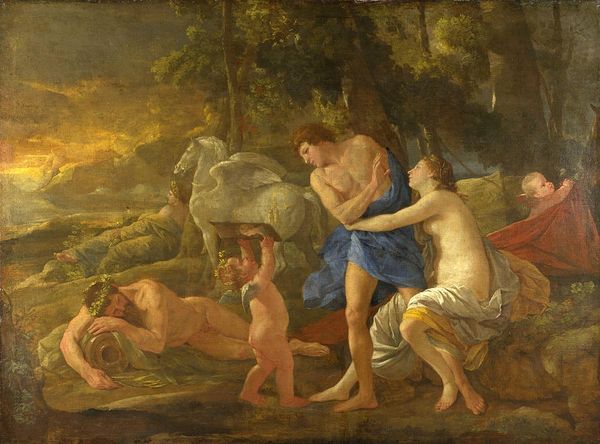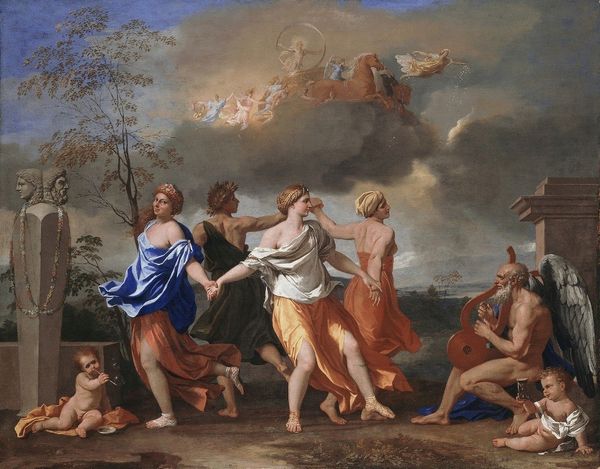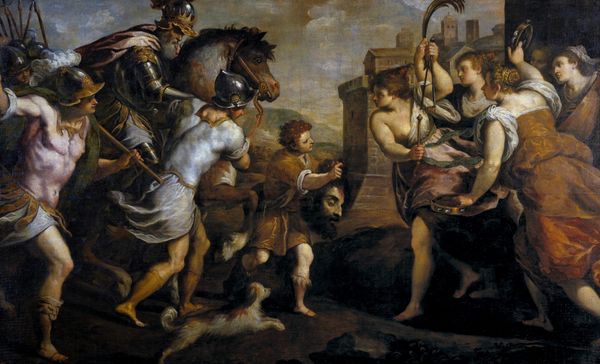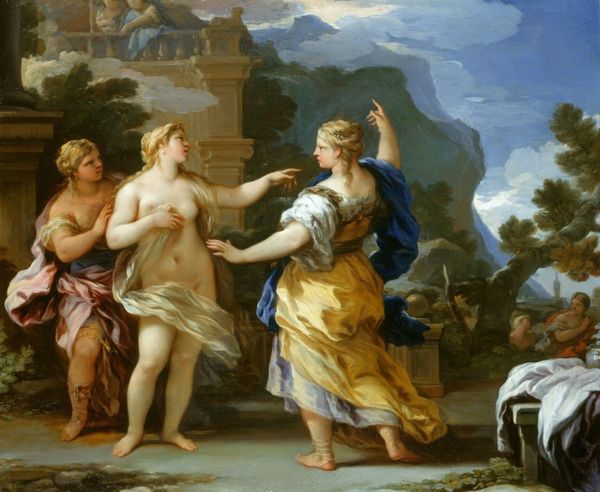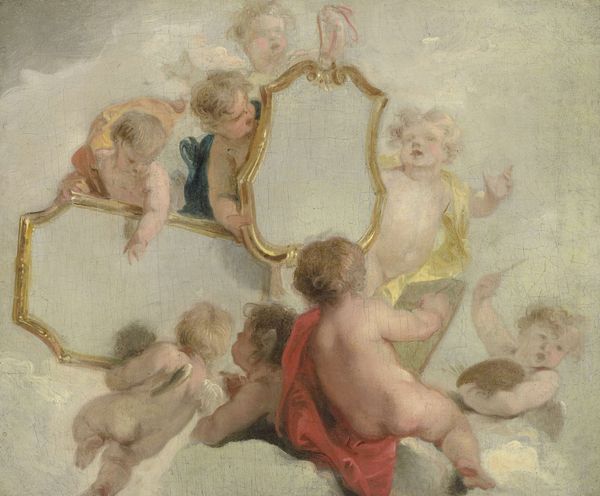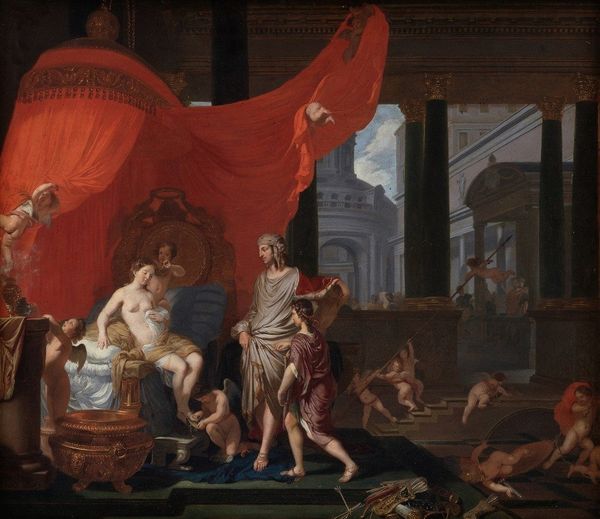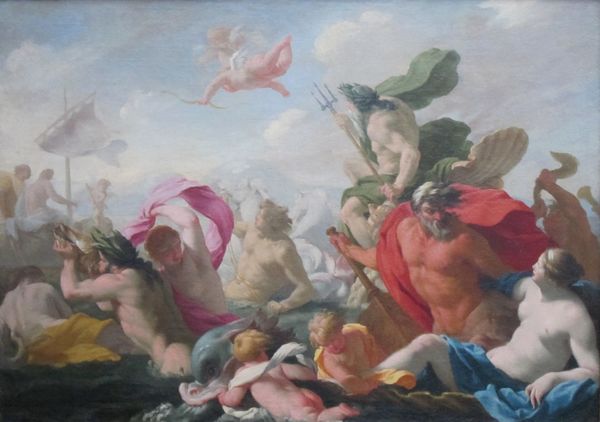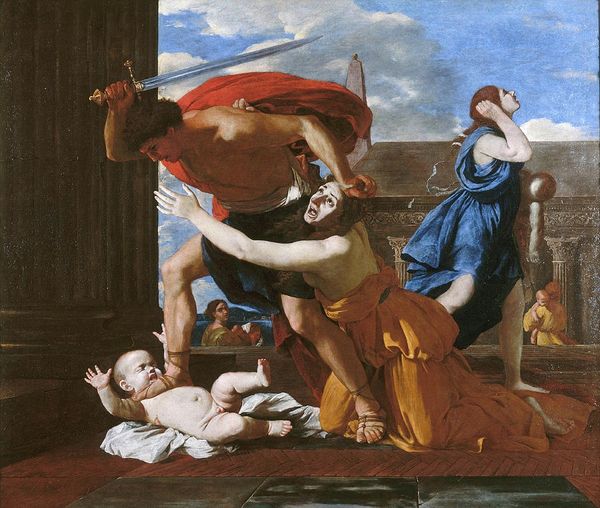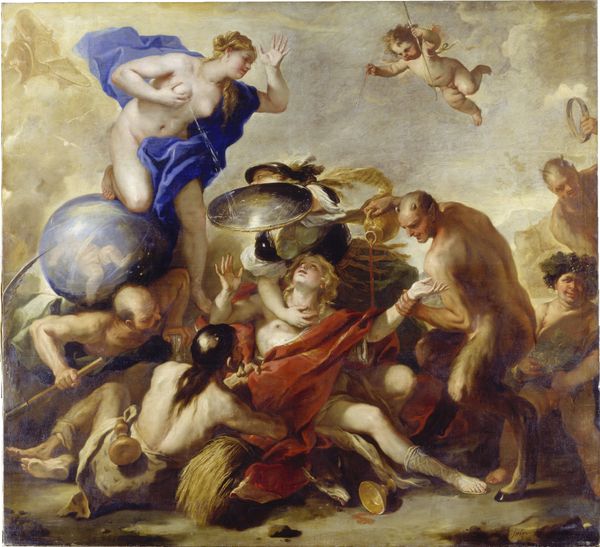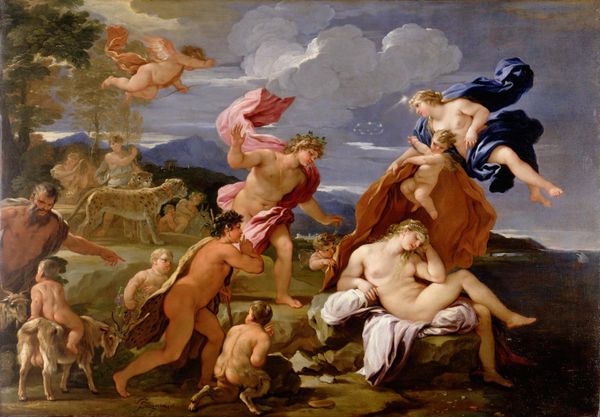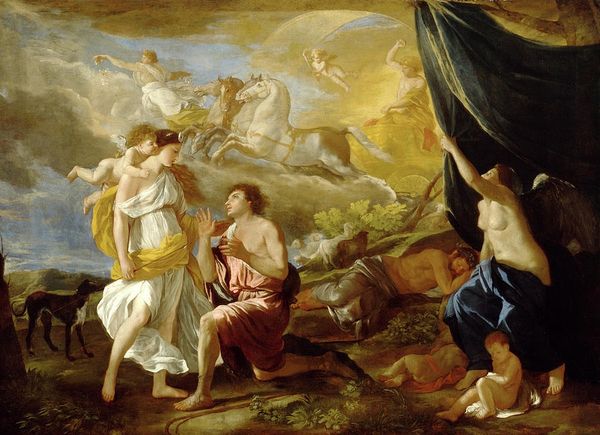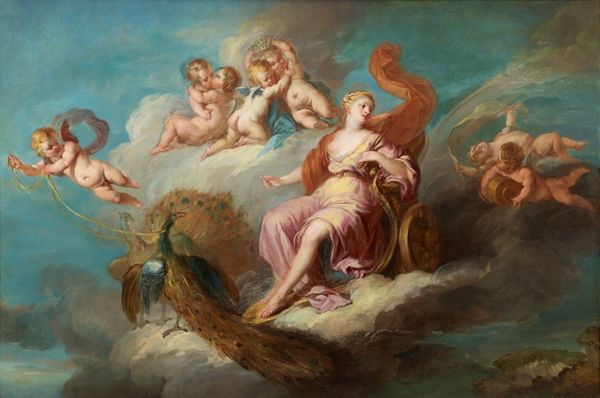
De Heilige Anthonius de Heremiet ; Allegorische voorstelling van de verzorging van leprozen en onnozelen 1665 - 1685
0:00
0:00
oil-paint
#
allegory
#
baroque
#
oil-paint
#
figuration
#
oil painting
#
history-painting
Copyright: Public Domain: Artvee
Curator: Immediately, I see the cherubs – there are three of them – hovering around what looks like a depiction of Saint Anthony. The fresco effect gives it a monumental, solid air despite the heavenly scene. Editor: Yes, this allegorical scene rendered in oil paint, is attributed to Gerard de Lairesse from sometime between 1665 and 1685. The title tells us that it depicts Saint Anthony the Hermit with an allegorical representation of care for lepers and the simple-minded. Curator: Right, St. Anthony was known for healing, but look closer at those cherubs. They feel more than decorative. Are they meant to symbolize some form of divine intervention? And the scroll, partially unfurled – is it scripture, or something else entirely? What statements are the artist trying to make by the arrangement of the bodies within this depiction of social care? Editor: The choice of oil allows for incredible details in their rendering; it’s quite interesting how Lairesse uses that realism against the inherent symbolism. The way light glances off the figures, creating texture and volume, suggests a craftsman's close attention to how materials can portray these ideals. Curator: Agreed, and think of who such an image might serve to convince during that period. Beyond just devotion, it arguably reflects power structures: nobility who provide “charity,” maintaining social hierarchies… Do you perceive that statement as well? Editor: Precisely, it draws lines connecting the elites’ exercise of power to religious or even divinely-sanctioned social mandates; that's interesting considering that even the brushes were likely made by the poor. This highlights both human suffering and labor exploitation right down to its very means of creation. Curator: Such an insight invites us to scrutinize whose stories truly get told and who benefits from those narratives. Editor: Yes, and by studying his artistic means – canvas, oils, even those brushes – one understands the historical realities that shaped his message and its audience. Curator: Well, seeing through a historical lens always provides richer insights into artworks! Editor: Indeed. Focusing on its physical making gives this image a unique voice as an object—one that makes it impossible for us to simply marvel without reflecting critically on those that enabled its existence.
Comments
No comments
Be the first to comment and join the conversation on the ultimate creative platform.

